Analysis of failure modes and long-term stability of dangerous rock mass on typical karst bank slope in the Three Gorges Reservoir area
-
摘要: 三峡库区地质环境复杂,受库水位升降作用影响岩溶岸坡消落区岩体劣化,加快了岸坡不稳定性发展。文章以三峡库区黄岩窝危岩体为研究对象,现场详查了消落带岩体劣化现象,计算了危岩体的长期稳定性数值。研究表明:黄岩窝危岩体存在垂直岩溶带和底部渗流带;底部渗流带处于消落带部位,存在软弱区和岩体劣化现象。考虑库水位和暴雨时岩溶水压岸坡稳定性系数为1.69,危岩体处于稳定状态。随着岩体劣化导致底部软弱区岩体参数不断下降,稳定性系数年均下降约0.01。预测在约57个周期性水位变动之后黄岩窝危岩体变为欠稳定状态,62个周期后发生失稳破坏。危岩体的破坏模式是顶部出现岩块倾倒崩落和底部软弱区贯通之后发生滑移的复合式破坏,与野外调查定性认识基本一致。研究结果对库区类似的地质灾害预警和防治有着重要的指导意义。Abstract: The Three Gorges Reservoir area presents a complex geological environment, where the deterioration of rock masses in the riparian zone of karst bank slopes is expedited by the fluctuating reservoir water levels of the reservoir, thereby hastening the evolution of the bank slopes towards instability. This study focuses on the Huangyanwo dangerous rock mass in the Three Gorges Reservoir area. A comprehensive filed investigation was conducted to scrutinize the deterioration phenomenon of rock masses within the water–level fluctuation zone, and a numerical analysis was performed to assess the long–term stability of the dangerous rock mass. The findings reveal the presence of a vertical karst zone and a bottom seepage zone in the Huangyanwo dangerous rock mass. The bottom seepage zone is situated within the water–level–fluctuation zone, characterized by areas of weakness and rock mass deterioration. Considering the influence of reservoir water levels and rainfall events, the stability coefficient of karst water pressure on the bank slope is calculated to be 1.69, indicating that the dangerous rock mass remains stable. Nevertheless, due to the progressive deterioration of rock mass parameters within the weak area at the bottom, the stability coefficient experiences an annual decline of approximately 0.01. It is predicted that the Huangyanwo dangerous rock mass will transition to an unstable state after approximately 57 cycles of periodic water level variations, and the instability failure will occur after 62 cycles. The failure mode of the dangerous rock mass involves a compound failure mechanism of toppling and sliding subsequent to the connection of the weak zone at the bottom, aligning closely with the qualitative understanding grained from field investigations. The research results hold significant instructive implications for the early warning and prevention strategies concerning analogous geological disasters in reservoir areas.
-
Keywords:
- rock mass deterioration /
- stability /
- Three Gorges Reservoir /
- buckling mode
-
0. 引言
自三峡库区蓄水以来,库水长期在145~175 m高程之间波动,导致消落带岩体损伤劣化,加速岸坡向失稳阶段发展[1 − 3]。从微观上来看,库水位周期性升降作用下,岸坡岩体的物理力学性质会逐步劣化[4],这种劣化一般通过力学参数的弱化来表现,包括单轴抗压强度、黏聚力、内摩擦角和弹性模量等[5]。宏观上表现为消落带岩石碎裂化,裂缝显现并扩张,岩溶管道发育等。三峡库区大量岩溶岸坡发生变形破坏,例如青石滑坡[5]、龚家坊滑坡[6]、箭穿洞危岩体[7]、板壁岩危岩体[8]、棺木岭危岩体[9]等,造成了过亿元的巨大损失。
很多学者对岩溶岸坡消落带岩体的劣化现象和破坏机制进行了研究。Hale等[10]通过对砂岩进行若干次干湿、冻融试验发现岩石的孔隙度值在2%~7%范围之间有显著劣化;刘新荣等[11]也发现岩石进行干湿循环试验后各种微观裂缝、孔隙度的显著增加,自身胶结物量减少。可见目前对岩石物理力学性质的研究较为丰富[12 − 13],但将参数变化所引起的劣化效应应用到实际岸坡的实例较少。张景昱等[14]以静水压力为研究因素,让岩样处于不同静水压力下再进行干湿循环试验,将不同静水压力和劣化损伤作用相结合,对典型岸坡进行稳定性数值分析,但未给出岸坡的失稳模式和破坏时间;张夏冉等[15]以数值模拟为方式研究了渗透系数与库水位升降对滑坡稳定性的影响研究,但没有考虑消落带岩体劣化的影响。可见当前库水长期周期性波动岩体劣化降低岸坡长期稳定性及其灾变演化缺乏相应的研究。岸坡长期稳定性分析是库岸防灾减灾的基础,十分有必要开展相关研究。
本文以典型岩溶岸坡黄岩窝危岩体为例,利用大量勘察手段详细调查了危岩体工程地质条件和岩体劣化现象,然后采用强度折减法并结合岩体劣化的规律性计算了岸坡在库水位周期性变化下的长期稳定性,分析岩体劣化对岩溶边坡稳定性的削弱加速作用,支撑黄岩窝危岩体及类似岸坡的防灾减灾工作。
1. 典型危岩体工程地质概况
1.1 危岩体基本概况
黄岩窝危岩体位于巫山县培石乡长江右岸,上距巫山县约23.6 km,下距三峡工程坝址约100 km(图1)。构造上位于官渡向斜南翼末端。出露基岩为下三叠统嘉陵江组(T1j3),以灰岩、鲕状颗粒燧石灰岩夹白云岩为主。该区域总体属于构造-侵蚀、剥蚀低山峡谷地貌。
危岩体由西至东延伸长达700 m,分为黄岩西段和黄岩东段。黄岩西段地形总体呈现缓坡-陡崖-台阶状陡坡,岩层产状18 °~25 °∠15 °~20 °,崖底为缓坡,坡角约30 °,为典型的顺向岩质岸坡。崖底高程105~110 m,崖顶高程250~280 m。危岩体北侧延伸至长江中心,南侧至斜坡顶中上部平缓地带,高程370~400 m,上游侧以冲沟为界,下游侧边界为陡崖带下游微地貌冲沟为界,后缘以查明的拉张裂缝为界,见图2(b)。
采用莱卡HDS8800扫描仪,远距离扫描黄岩窝危岩体,突破传统的单点测量方法,扫描危岩体表面的三维点云数据,获取高精度高分辨率的数字地形模型,准确地获取危岩的长宽高及相对高差、水平位置、坡度等集合尺寸数据。结合传统地质调查测绘的危岩卸荷带,实景复制危岩体,获得精确的危岩体模型及体量(表1)。危岩体主要分布于两段高陡的岩质岸坡上,有6处危岩单体W1—W6,单体体积为5200~540000 m3, 总体积为95.5×104 m3。
表 1 危岩单体形态特征Table 1. Morphological characteristics of the dangerous rock mass monomer危岩
编号危岩形态 体积
/m3主崩方向
/(°)宽/m 高/m 厚/m W1 280~300 100~120 20~41.30 540000 3 W2 100~120 100~110 25~32 360000 2 W3 20~50 70 9 22050 352 W4 50 30~45 5 9000 4 W5 28~35 90~100 7 18480 1 W6 20 65 4 5200 2 合计 — — — 954730 — 1.2 危岩体劣化特征
黄岩西段陡崖岩体由于构造裂隙发育的顶部被切割呈块状、板状,临近陡崖面部位卸荷作用强烈,陡崖段发育一组倾向坡外的外倾结构裂隙和垂直于坡向的结构裂隙,受上述两组裂隙的切割,在陡崖面上形成板状危岩单体W1—W6。以W1为研究对象,运用单绳升降技术(SRT)追索崖壁裂缝(图3),测得卸荷裂缝沿着岩壁自上而下发育长达30~70 m,在崖壁面呈上宽下窄延伸趋势,底部延伸至与软弱区相交接。在175 m以上张开约0.2~1.5 m,有粉质黏土夹碎块石及植物根系充填,较平直,贯通性好,结合差;在145~175 m张开约2~25 cm,由灰岩风化碎屑物及黏土充填,临近江面呈闭合状,层面平直,钙泥质胶结。
蓄水后随着劣化的持续进行,危岩体底座区域受库水常年冲蚀溶蚀作用形成了大面积的岩溶凹腔,劣化带附近的岩体逐渐破碎解体,失去了固有的稳定结构。根据单绳升降(SRT)及地质雷达(图4)、钻探岩芯段及孔内成像综合判断在消落带145~170 m段存在软弱区(图5),岩性为薄层状灰岩,浅灰色,晶质结构,钙泥质胶结,夹白色条带状方解石脉,发育有溶蚀裂隙、晶洞孔隙。受水位涨落干湿交替作用,临江面岩体风化成块体,卸荷裂隙外倾掉块。170 m以上为中—厚层状灰岩,岩体相对较完整。裂隙沿着原有的层状和受压溃形成的新生节理向两侧扩展,将原有的岩体结构由中厚层状变为薄层、极薄层状的碎块。底部岩体的劣化外加后缘卸荷裂缝的不断扩张,使危岩体的稳定性出现下降的趋势。
2. 数值分析方法
2.1 传统公式法
本次主要在消落带取岩样,分别采取中厚层状灰岩12组。灰岩样试验内容为天然饱和抗压、天然饱和抗拉、天然饱和直剪及变形试验(包括弹性模量、变形模量和泊松比),在危岩临江面台阶处刻槽取岩层面样3组作层面剪切试验。根据试验成果,进行数理统计。本次岩体试验成果严格按照《工程岩体试验方法标准》(GB/T 50266—1999)[16]和《土工试验方法标准》(GB/T 50123—1999)[17]及有关技术标准进行。根据地质环境条件,按重庆市《地质灾害防治工程勘察规范》DB 50/143—2003[18]中10.6条,求得危岩区岩体物理力学指标标准值,具体见表2。
表 2 黄岩窝危岩体物理力学参数表Table 2. Physical and mechanical parameters of Huangyanwo dangerous rock mass岩性 重度/(kN·m−3) 弹性模量/MPa 泊松比 黏聚力/MPa 内摩擦角/(°) 抗拉强度
/MPa灰岩(基岩) 26.82 50 400 0.20 5.48 44.4 2.71 灰岩(危岩体) 26.91 27 200 0.33 1.79 37.6 2.71 灰岩(破碎带) 26.82 27 200 0.33 1.79 37.6 2.71 结构面 黏聚力/MPa 内摩擦角/(°) 抗拉强度
/MPa法向刚度
/(MPa·m−1)切向刚度
/(MPa·m−1)1.534 34.34 0.542 40 000 10 000 根据《地质灾害防治工程勘察规范》[18]规范要求,分别以滑移式和倾倒式两种模型计算出危岩体的稳定性,结果见表3。目前整体稳定性系数大于2.49,处于较稳定状态。但是长期水位波动下,岩体劣化带来的稳定性下降问题在现行规范要求的工况中并没有考虑。
表 3 传统公式法计算的稳定性系数Table 3. Stability coefficients calculated by traditional formula method库水位/m 175 145 稳定系数 抗滑移 2.60 2.61 抗倾覆 2.49 2.51 2.2 模型建立
根据黄岩窝危岩体的工程地质剖面,构建了一个两维的连续-非连续数值模型,数值模型如图6所示。综合考虑数值模型的计算速度和精度,危岩体材料的网格为非均匀三角单元,宽度设置为5~10 m,共计2195个单元。消落带附近采用3 m间隔的节理来模拟由于岩溶、库水引起的破碎结构面。左右侧边界约束X方向的速度,底部约束X、Y方向的速度。模型中岩体采用连续介质的Morh-Coulomb本构模型, 结构面为不连续介质的Morh-Coulomb模型。
引入岩体劣化工况,考虑库水周期性变化带来的强度衰减,计算多年水位周期后岸坡稳定性变化。岩质岸坡计算岸坡稳定性采用的是强度折减法,其基本原理是将坡体强度参数:黏聚力c和内摩擦角φ值同时除以一个折减系数 Ftrial, 得到一组新的c′、φ′值,然后作为新的资料参数输入 , 再进行试算。当计算不收敛时,对应的Ftrial被称为坡体的最小稳定安全系数,此时坡体达到极限状态,发生剪切破坏,同时可得到坡体的破坏滑动面。
$$ c'= c/ F_{{\rm{trial}}} $$ (1) $$ \varphi'={\rm{arctan}}(\tan\varphi/ F_{{\rm{trial}}})^{[19]} $$ (2) 本次模拟选用裂隙较为发育的黄岩西段W1号危岩体,其总体积较大,有更为严重的失稳隐患。后缘发育着L1-1—L1-5总共五条卸荷裂缝,除了裂缝L1-5发育较浅以外,L1-1—1-4全部延伸至劣化带附近,致使强降雨产生的大量地表水汇集于陡崖前缘卸荷裂隙带内,并迅速入渗。根据相关规范[18],岩质边坡后缘裂隙水压一般呈三角梯度分布,充水高度为裂隙长度的1/3~1/2。为了实现强降雨带来的高岩溶裂隙水压,采用1/2裂隙充水的静水压力方式实现,自右往左W1-1—1-4施加的最大静水压力分别为0.28,0.36,0.50,0.56 MPa。
黄岩窝危岩体的地下水系统是岩溶裂隙管道系统,因此计算中采用地下水浸润线方式处理。危岩体高程145~175 m附近发育大量岩溶凹腔,见图2(a),中上部岩体较为完整,初步判断出水口位置和水位变化保持同步,根据工况的不同分别取145 m或175 m。危岩体钻探难度较大,无法准确探测到潜水面位置,故高水头暂时无法确定,现考虑根据岩层倾向和劣化区的延伸方向综合判断。假设地下水沿着岩层面发生渗流,在出水口位置沿着层面向后缘延伸至计算模型边界处取高水头203 m。
目前的常用软件中没有和时间效应相关的模型,不能自动实现劣化带来的岩体参数的动态变化,但能通过调整岩体力学参数和节理接触的参数来实现这种劣化效应。
岩体劣化包括岩石劣化和结构面劣化:一方面是由岩石劣化导致的强度参数下降,一般具有一定的规律性,可以通过干湿循环试验测得。另一方面是结构面的劣化,其参数变化与其分布、岩层埋深密切相关,具有一定的不均一性。经过室内干湿循环测得灰岩在每个水文周期内强度参数下降约0.4%~0.9%,为方便计算近似取1%;计算时每阶段参数下降4%,一共做10次岩体持续劣化的计算,共计下降40%,模拟实际40个水位周期后危岩体底座持续劣化所引起的参数变化。而结构面由于分布不均,密集分布可能导致岩体在前期劣化加速高达约7~45倍,后期劣化速率逐渐放缓,为等效c、φ值折减系数取每个水位周期下降约1.5%[19 − 20]。
2.3 工况设立
工况共设置为5个,其中工况一分为145 m、175 m水位和暴雨工况,工况二至五考虑了岩体劣化的效应,又分别包含了10个子工况,每个子工况代表增加4个水位周期。计算过程中着重关注岩体强度劣化对危岩体失稳破坏的影响(表4)。
表 4 数值计算工况表Table 4. Numerical computational conditions table工况一 1-1:自重+145 m水位 1-2:自重+175 m水位 1-3:自重+145 m库水位+暴雨 工况二 2-1/10自重+145 m水位+岩体强度劣化 工况三 3-1/10自重+175 m水位+岩体强度劣化 工况四 4-1/10自重+145 m水位+暴雨+岩体强度劣化 工况五 5-1/10自重+175 m水位+暴雨+岩体强度劣化 3. 变形机理分析
从工况一的位移场来看,见图7(a),总体上是以水平方向运动为主,垂直方向只有微量沉降位移,且发生位移处集中在W1-1—1-3号危岩体,W1-4和W1-5整体保持稳定,没有滑移变形。位移变化最大的区域主要集中在W1-2和W1-3顶部,由上至下呈现递减的趋势, 175 m高程附近位移基本为0 m。伴随着劣化的持续进行,顶部位移逐渐增大,推测其破坏模式是顶部先发生局部区域掉块。待劣化程度的进一步加剧,踵部发生压溃破坏,失去了支撑顶部块体的能力,致使危岩体沿着已经发育明显的卸荷裂缝向外倾倒。从Z向应力的分布来看,见图7(b),应力主要集中在岩溶劣化和完整岩体交接处,危岩体压溃底部加速了劣化向内部延伸发展。基岩与危岩体交界处应力发生明显下降,这是由于裂缝切割了后缘基岩和危岩体之间的应力分布,形成了这种骤降的不均匀性。
工况一145 m水位时计算所得稳定性系数FOS=2.03,175 m为2.06。对比145 m和175 m总水头云图(图8)发现,低水位时水头沿着渗流方向均匀流出,在出水口处补给河水;高水位时地下水在L1-3处大量汇聚,没有及时排出。同时水位的抬升增加了库水对危岩体的淹没度,致使侧向压力增大,加固了危岩体底座稳定性。二者对比可知,高水位对危岩体的稳定有着一定程度的加强作用。在发生强降雨时,雨水大面积补给地下水,潜水面上升,后缘裂缝中积聚大量汇入的地表水,对危岩体产生向外的推力,这种推力对外侧危岩体的变形有着加剧作用。综合数值计算和野外勘察的结果,岩体劣化带或溶蚀破坏区受库区水位涨落掏蚀、冲刷浪蚀,岩体干湿循环作用下使得岩体强度逐渐降低、劣化破碎带加宽,劣化区岩体逐渐软化及结构面粘结强度降低使闭合岩体张开,而应力在岩体的破碎区集中。危岩在库区水位涨落掏蚀、地表水渗入裂隙及自重等作用下加剧岩体劣化破碎程度,危岩体沿破碎带或结构面发生溃屈变形,进而引起上部岩体坠落、倾倒变形。同时底部劣化带强度的降低使得危岩体沿着潜在滑移面向临空方向发生滑移。
4. 长期稳定性分析
工况二至五中考虑了岩体劣化对危岩体的影响。伴随水位周期的增加,劣化区的结构强度逐渐下降,这正是危岩体在走向失稳的诱因。上部岩体的重力作用于危岩体脚踵部,导致该处剪切裂缝最早开始出现,沿着危岩体和劣化区向下发展。
以极端工况工况四为例,由于W1-1的总体积小于W1-2和W1-3,使得软弱区凸起处较前缘相比承受的顶部荷载较大,该处最先发生屈服,但是屈服面积较小,约占11%,总体以剪破坏为主,有进一步向外扩展的趋势,见图9(a)。到了第20个水位周期,屈服区从拉张破坏区向临江侧发生扩展,屈服区的面积占软弱区总面积达到了约50%,其中剪破坏区占总破坏区比约80%~90%,见图9(b)。在第30个水位周期劣化区内屈服面积进一步增加,同时值得注意的是此时除了软弱区内部发生剪破坏以外,后缘开始出现拉张破坏,见图9(c)。后缘岩体同时受拉应力和剪应力,一部分强度较低的完整块体被切割成了破碎的不具有自稳结构的碎块,且随着劣化作用的加剧将在软弱区后缘形成连续的贯通面。在第40个水位周期时屈服区已经发育到整个危岩体底座,前缘软弱区内以剪破坏为主,底座后缘既有剪破坏又有拉破坏,二者交界面则以拉破坏为主,见图9(d),这预示着危岩体一旦失稳,不仅仅是前缘受劣化掏蚀的位置发生破坏,后缘被卸荷裂隙切割形成的W1-3和W1-4危岩体也会发生大规模垮塌。
从第40个水位周期的最大剪应变云图(图10)发现整个劣化区内都发生了一定程度的剪应变,其中发生最大剪应变区域分布在劣化区后缘,达到了0.03,并且有向内部进一步延伸的趋势。基座附近的灰岩由原本较为完整的岩体被分割成了破碎的块体,这与现场勘察的观察到的结果极为相似。此时FOS值已经降低到了1.24左右,总位移较工况一提升了近5个数量级(图11)。顶部最大位移达到了1.20 m左右,说明该阶段破坏区已经处于大变形阶段,承载能力不断降低。此时应该充分重视岩体劣化对危岩体所造成的影响,对于整个危岩体来说岩体劣化加速了其演变过程且最终只会走向失稳破坏。
从计算所得的稳定性系数变化图来看(图12),岩体劣化给危岩体带来的影响不容忽略。工况四在第40个水位周期后危岩体整体处于稳定状态,但是稳定性系数和时间周期近似为线性关系,推测在49个水位周期后危岩体从稳定状态转变为基本稳定状态,其稳定性系数下降到1.14,在第57个周期后处于欠稳定状态,直到第62个周期后稳定性系数下降至0.99危岩体可能发生失稳破坏。工况四较工况五整体稳定性系数略有提高,但随着时间的增加危岩体稳定性系数下降趋势没变。
真实的水位是动态的、不断变化的,但黄岩窝危岩体的长期稳定性下降趋势不会发生较大变化。从计算的原理上来看,失稳时间预测只是粗略的估算;精确的预测需要开展更多的工作进行支撑。
5. 结论
本文以黄岩窝危岩体为例,采用连续-非连续数值分析方法对其在不同库水位和岩体劣化条件下的稳定性和变形机理进行了研究,得到以下结论:
(1)黄岩窝危岩体单体体积为5 200~540 000 m3,总体积为95.5×104 m3,后缘被多条卸荷裂缝切割成独立的近乎直立的柱状危岩,底部受库水掏蚀作用形成软弱区。随着水位周期的增加,危岩体底座受库水冲蚀溶蚀作用形成了大面积的岩溶凹腔,岩体出现碎裂化,力学性质减弱,促进了危岩体发生失稳破坏。
(2)数值分析表明危岩体变形主要集中在W1-1—1-3顶部,首先可能发生倾倒破坏;应力在软弱区附近发生集中导致附近岩体逐渐破碎,后续会形成连续的贯通面致使底部发生滑移剪切破坏,最终的失稳模式为二者的复合破坏,与现场勘察的结果较为一致。
(3)危岩体的变形主要受底部软弱区的岩体劣化影响,高水位时的整体稳定性略高于低水位。考虑库水位和暴雨时岩溶岸坡稳定性系数为1.69,危岩体处于稳定状态。但是随着岩体劣化导致底部软弱区岩体参数不断下降,稳定性系数年均下降约0.01125。预测在约57个周期性水位变动之后黄岩窝危岩体变为欠稳定状态,62个周期后发生失稳破坏。
(4)黄岩窝危岩体体积极大,一旦发生破坏产生涌浪将对沿岸居民和长江航道造成巨大威胁。针对该危岩体长期稳定性演变特征,建议进行长期专业监测,适时开展底部劣化带的防护工作,可以采用喷浆回灌和布设锚杆等措施进行基座岩体补强加固,保障危岩体长期稳定。
-
表 1 危岩单体形态特征
Table 1 Morphological characteristics of the dangerous rock mass monomer
危岩
编号危岩形态 体积
/m3主崩方向
/(°)宽/m 高/m 厚/m W1 280~300 100~120 20~41.30 540000 3 W2 100~120 100~110 25~32 360000 2 W3 20~50 70 9 22050 352 W4 50 30~45 5 9000 4 W5 28~35 90~100 7 18480 1 W6 20 65 4 5200 2 合计 — — — 954730 — 表 2 黄岩窝危岩体物理力学参数表
Table 2 Physical and mechanical parameters of Huangyanwo dangerous rock mass
岩性 重度/(kN·m−3) 弹性模量/MPa 泊松比 黏聚力/MPa 内摩擦角/(°) 抗拉强度
/MPa灰岩(基岩) 26.82 50 400 0.20 5.48 44.4 2.71 灰岩(危岩体) 26.91 27 200 0.33 1.79 37.6 2.71 灰岩(破碎带) 26.82 27 200 0.33 1.79 37.6 2.71 结构面 黏聚力/MPa 内摩擦角/(°) 抗拉强度
/MPa法向刚度
/(MPa·m−1)切向刚度
/(MPa·m−1)1.534 34.34 0.542 40 000 10 000 表 3 传统公式法计算的稳定性系数
Table 3 Stability coefficients calculated by traditional formula method
库水位/m 175 145 稳定系数 抗滑移 2.60 2.61 抗倾覆 2.49 2.51 表 4 数值计算工况表
Table 4 Numerical computational conditions table
工况一 1-1:自重+145 m水位 1-2:自重+175 m水位 1-3:自重+145 m库水位+暴雨 工况二 2-1/10自重+145 m水位+岩体强度劣化 工况三 3-1/10自重+175 m水位+岩体强度劣化 工况四 4-1/10自重+145 m水位+暴雨+岩体强度劣化 工况五 5-1/10自重+175 m水位+暴雨+岩体强度劣化 -
[1] 殷跃平,黄波林,李滨,等. 三峡库区消落带溶蚀岩体劣化指标研究[J]. 地质学报,2021,96(8):2590 − 2600. [YIN Yueping,HUANG Bolin,LI Bin,et al. Research on the deterioration index of karst rock mass in the fluctuating water level zone of Three Gorges Reservoir area[J]. Acta Geologica Sinica,2021,96(8):2590 − 2600. (in Chinese with English abstract) DOI: 10.3969/j.issn.0001-5717.2021.08.021 YIN Yueping, HUANG Bolin, ZHANG Zhihua, Yan Guoqiang, Zheng Jiahao. Research on the deterioration index of karst rock mass in the fluctuating water level zone of Three Gorges Reservoir area[J]. Acta Geologica Sinica, 2021, 96(8): 2590~2600.(in Chinese with English abstract) DOI: 10.3969/j.issn.0001-5717.2021.08.021
[2] 杨何,汤明高,许强,等. 三峡库区消落带岸坡岩体劣化特性测试及质量评价[J]. 水利学报,2020,51(11):1360 − 1371. [YANG He,TANG Minggao,XU Qiang,et al. Deterioration characteristic test and quality evaluation of bank slope rock mass in hydro–fluctuation belt of Three Gorges Reservoir area[J]. Journal of Hydraulic Engineering,2020,51(11):1360 − 1371. (in Chinese with English abstract) YANG He, TANG Minggao, XU Qiang, et al. Deterioration characteristic test and quality evaluation of bank slope rock mass in hydro–fluctuation belt of Three Gorges Reservoir Area[J]. Journal of Hydraulic Engineering, 2020, 51(11): 1360–1371.(in Chinese with English abstract)
[3] 刘新荣,景瑞,缪露莉,等. 巫山段消落带岸坡库岸再造模式及典型案例分析[J]. 岩石力学与工程学报,2020,39(7):1321 − 1332. [LIU Xinrong,JING Rui,MIU Luli,et al. Reconstruction models and typical case analysis of the fluctuation belt of reservoir bank slopes in Wushan[J]. Chinese Journal of Rock Mechanics and Engineering,2020,39(7):1321 − 1332. (in Chinese with English abstract) LIU Xinrong, JING Rui, MIU Luli, et al. Reconstruction models and typical case analysis of the fluctuation belt of reservoir bank slopes in Wushan. Chinese Journal of Rock Mechanics and Engineering, 2020, 39(7): 1321 – 1332(in Chinese with English abstract).
[4] XU Q, YANG H, TANG M G, et al. Variability of permeability and seepage characteristics in soil landslides: A tests case in the Three Gorges Reservoir area, China[J]. Water Science & Technology Water Supply, 2019.
[5] 王世昌,陈小婷,黄波林,等. 三峡库区青石滑坡的变形特征及形成机理研究[J]. 人民长江,2013,44(增刊2):66 − 70. [WANG Shichang,CHEN Xiaoting,HUANG Bolin,et al. Study on deformation characteristics and formation mechanism of Qingshi landslide in Three Gorges Reservoir area[J]. Yangtze River,2013,44(Sup2):66 − 70. (in Chinese) WANG Shichang, CHEN Xiaoting, HUANG Bolin, LIU Guangning. Study on deformation characteristics and formation mechanism of Qingshi landslide in three Gorges Reservoir Area[J]. Yangtze River, 2013, 44(S2): 66–70. (in Chinese
[6] 黄波林. 水库滑坡涌浪灾害水波动力学分析方法研究[D]. 中国地质大学, 2014. HUANG Bolin. Study on hydrodynamic analysis method of reservoir landslide surge disaster[D]. China University of Geosciences, 2014. (in Chinese with English abstract)
[7] 王文沛,李滨,黄波林,等. 三峡库区近水平厚层斜坡滑动稳定性研究—以重庆巫山箭穿洞危岩为例[J]. 地质力学学报,2016,22(3):725 − 732. [WANG Wenpei,LI Bin,HUANG Bolin,et al. Stability analysis of sub–horizontal thick–bedded slope in three gorges reservior area:A case study of jianchuandong dangerous rockmass in Wushan,Chongqing[J]. Journal of Geomechanics,2016,22(3):725 − 732. (in Chinese with English abstract) WANG Wenpei, LI Bin, HUANG Bolin, et al. Stability analysis of sub–horizontal thick–bedded slope in three gorges reservior area: a case study of jianchuandong dangerous rockmass in wushan, chongqing[J]. Journal of Geomechanics, 2016, 22(3): 725–732.(in Chinese with English abstract)
[8] 黄波林,殷跃平. 水库区滑坡涌浪风险评估技术研究[J]. 岩石力学与工程学报,2018,37(3):621 − 629. [HUANG Bolin,YIN Yueping. Risk assessment research on impulse wave generated by landslide in reservoir[J]. Chinese Journal of Rock Mechanics and Engineering,2018,37(3):621 − 629. (in Chinese with English abstract) HUANG Bolin, YIN Yueping. Risk assessment research on impulse wave generated by landslide in reservoir[J]. Yanshilixue Yu Gongcheng Xuebao/Chinese Journal of Rock Mechanics and Engineering, 2018, 37(3): 621–629. (in Chinese with English abstract)
[9] 陈小婷,王健,黄波林,等. 库水位变动条件下柱状危岩体变形破坏机理[J]. 中国地质灾害与防治学报,2019,30(2):9 − 18. [CHEN Xiaoting,WANG Jian,HUANG Bolin,et al. Deformation and failure mechanism of columnar dangerous rock mass under changing reservoir water level[J]. The Chinese Journal of Geological Hazard and Control,2019,30(2):9 − 18. (in Chinese with English abstract) CHEN Xiaoting, WANG Jian, HUANG Bolin, et al. Deformation and failure mechanism of columnar dangerous rock mass under changing reservoir water level[J]. The Chinese Journal of Geological Hazard and Control, 2019, 30(02): 9–18. (in Chinese with English abstract)
[10] HALE P A,SHAKOOR A. A laboratory investigation of the effects of cyclic heating and cooling,wetting and drying,and freezing and thawing on the compressive strength of selected sandstones[J]. Environmental & Engineering Geoscience,2003,9(2):117 − 130.
[11] 刘新荣,袁文,傅晏,等. 干湿循环作用下砂岩溶蚀的孔隙度演化规律[J]. 岩土工程学报,2018,40(3):527 − 532. [LIU Xinrong,YUAN Wen,FU Yan,et al. Porosity evolution of sandstone dissolution under wetting and drying cycles[J]. Chinese Journal of Geotechnical Engineering,2018,40(3):527 − 532. (in Chinese with English abstract) LIU Xinrong, YUAN Wen, FU Yan, et al. Porosity evolution of sandstone dissolution under wetting and drying cycles[J]. Chinese Journal of Geotechnical Engineering, 2018, 40(03): 527–532.(in Chinese with English abstract)
[12] 胡玉,邓华锋,李建林,等. 水–岩作用下砂岩微细观结构变化特性及机理研究[J]. 防灾减灾工程学报,2018,38(2):265 − 273. [HU Yu,DENG Huafeng,LI Jianlin,et al. Research on characteristics and mechanism of micro–structure variation in sandstone under water–rock interaction[J]. Journal of Disaster Prevention and Mitigation Engineering,2018,38(2):265 − 273. (in Chinese with English abstract) HU Yu, DENG Huafeng, LI Jianlin, et al. Research on Characteristics and Mechanism of Micro–structure Variation in Sandstone under Water–rock Interaction[J]. Journal of Disaster Prevention and Mitigation Engineering, 2018, 38(02): 265–273(in Chinese with English abstract)
[13] 邓华锋,原先凡,李建林,等. 浸泡作用下砂岩断裂力学特性及劣化机理[J]. 地球科学(中国地质大学学报),2014,39(1):108 − 114. [DENG Huafeng,YUAN Xianfan,LI Jianlin,et al. Fracture mechanics characteristics and deterioration mechanism of sandstone under reservoir immersion interaction[J]. Earth Science(Journal of China University of Geosciences),2014,39(1):108 − 114. (in Chinese with English abstract) DOI: 10.3799/dqkx.2014.011 DENG Huafeng, YUAN Xianfan, LI Jianlin, et al. Fracture mechanics characteristics and deterioration mechanism of sandstone under reservoir immersion interaction[J]. Earth Science(Journal of China University of Geosciences), 2014, 39(1): 108–114.(in Chinese with English abstract) DOI: 10.3799/dqkx.2014.011
[14] 张景昱,宛良朋,潘洪月,等. 考虑水–岩作用特点的典型岸坡长期稳定性分析[J]. 岩土工程学报,2017,39(10):1851 − 1858. [ZHANG Jingyu,WAN Liangpeng,PAN Hongyue,et al. Long–term stability of bank slope considering characteristics of water–rock interaction[J]. Chinese Journal of Geotechnical Engineering,2017,39(10):1851 − 1858. (in Chinese with English abstract) DOI: 10.11779/CJGE201710013 ZHANG Jingyu, WAN Liangpeng, PAN Hongyue, et al. Long–term stability of bank slope considering characteristics of water–rock interaction[J]. Yantu Gongcheng Xuebao/Chinese Journal of Geotechnical Engineering, 2017, 39(10): 1851–1858.(in Chinese with English abstract) DOI: 10.11779/CJGE201710013
[15] 张夏冉,殷坤龙,夏辉,等. 渗透系数与库水位升降对下坪滑坡稳定性的影响研究[J]. 工程地质学报,2017,25(2):488 − 495. [ZHANG Xiaran,YIN Kunlong,XIA Hui,et al. Influence of permeability coefficient and reservoir water level fluctuation on Xiaping landslide stability[J]. Journal of Engineering Geology,2017,25(2):488 − 495. (in Chinese with English abstract) ZHANG Xiaran, YIN Kunlong, XIA Hui, et al. Influence of permeability coefficient and reservoir water level fluctuation on xiaping landslide stability[J]. Journal of Engineering Geology, 2017, 25(02): 488–495.(in Chinese with English abstract)
[16] 工程岩体试验方法标准: GB/T50266—1999[S]. 1999. Standard for tests method of engineering rock massas: GB/T50266—1999[S]. 1999. (in Chinese)
[17] 土工试验方法标准: GB/T50123—1999[S]. 1999. Standard for geotechnical tests method: GB/T50123–1999[S]. 1999. (in Chinese)
[18] 地质灾害防治工程勘察规范: DB50/143—2003[S]. 2003. Code for investigation of geological disaster prevention works: DB50/143—2003[S]. 2003. (in Chinese)
[19] 杨光华,钟志辉,张玉成,等. 用局部强度折减法进行边坡稳定性分析[J]. 岩土力学,2010,31(增刊2):53 − 58. [YANG Guanghua,ZHONG Zhihui,ZHANG Yucheng,et al. Slope stability analysis by local strength reduction method[J]. Rock and Soil Mechanics,2010,31(Sup2):53 − 58. (in Chinese with English abstract) YANG Guanghua, ZHONG Zhihui, ZHANG Yucheng , et al. Slope stability analysis by local strength reduction method[J]. Rock and Soil Mechanics, 2010, 31(S2): 53–58.(in Chinese with English abstract)
[20] 殷跃平, 闫国强, 黄波林, 等. 三峡水库消落带斜坡岩体劣化过程地质强度指标研究[J]. 水利学报, 2020, 51(8): 883 – 896. YIN Yueping, YAN Guoqiang, HUANG Bolin, et al. Geological strength index of the slope rock mass deterioration process of the hydro–fluctuation belt in the Three Gorges Reservoir, China[J]. Journal of Hydraulic Engineering, 2020, 51(8): 883 – 896. (in Chinese with English abstract)
-
期刊类型引用(1)
1. 张仲伯. 雨花台区板桥河闸下右岸堤防稳定分析. 地下水. 2024(03): 300-302 .  百度学术
百度学术
其他类型引用(0)





 下载:
下载:

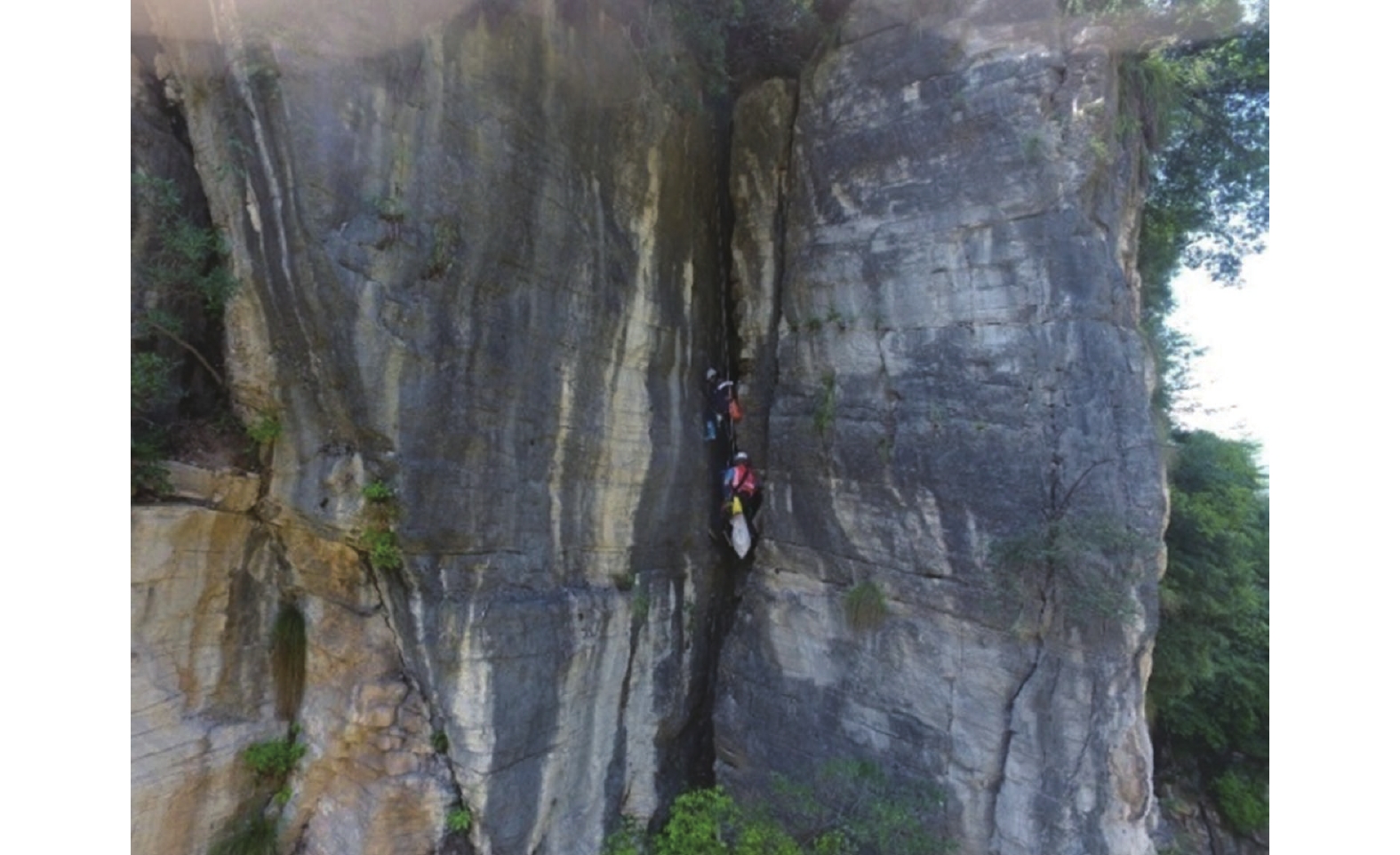

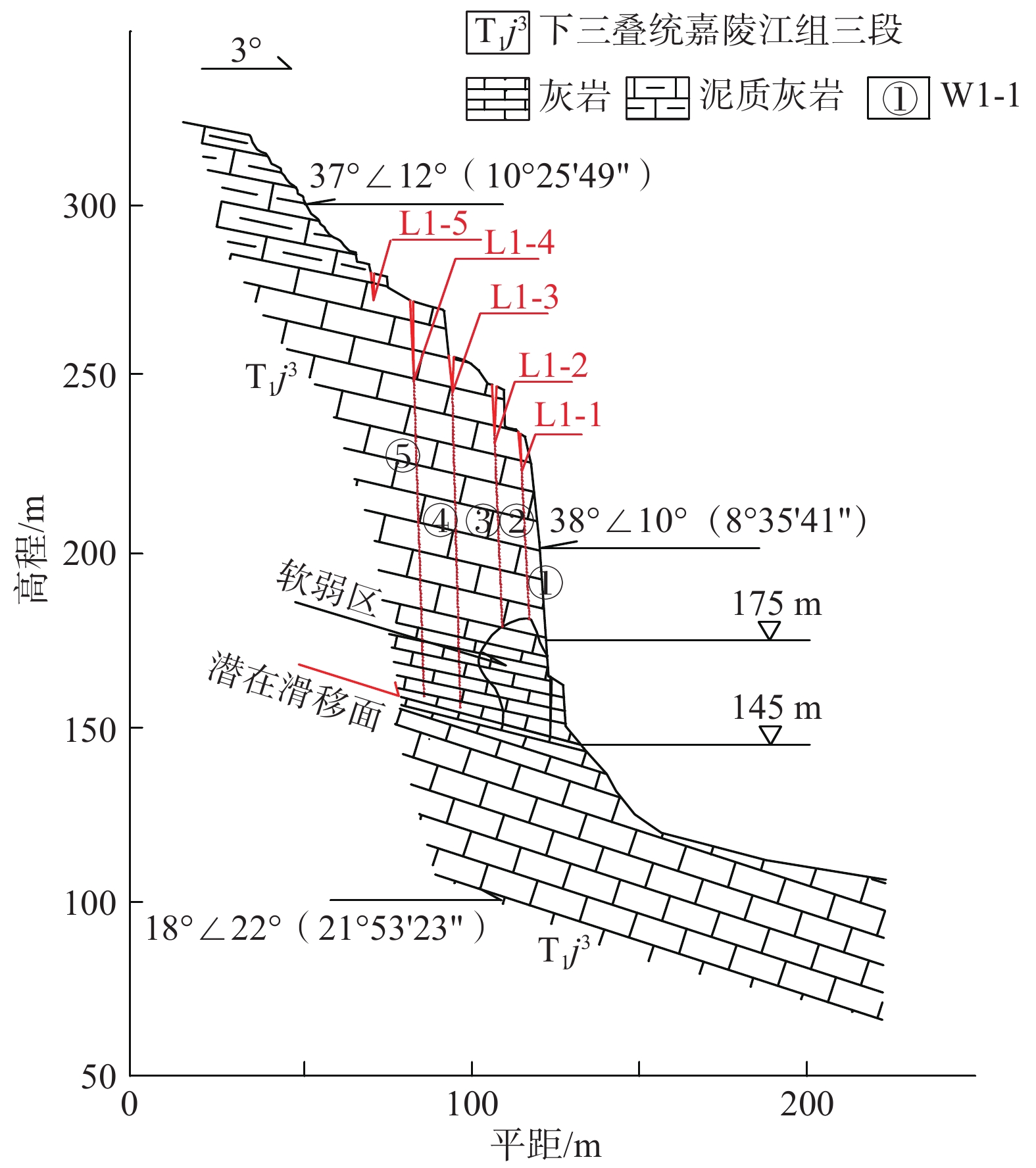



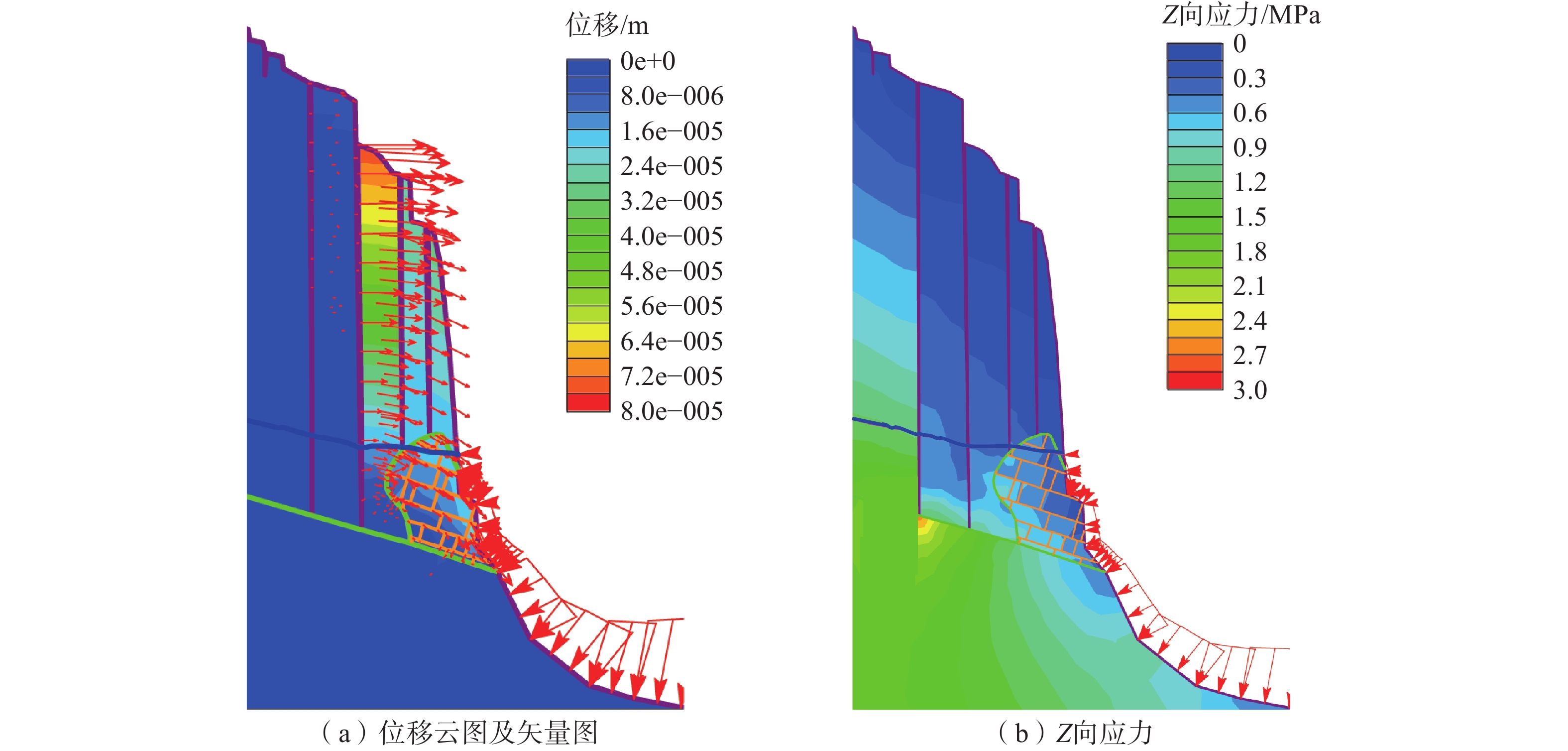
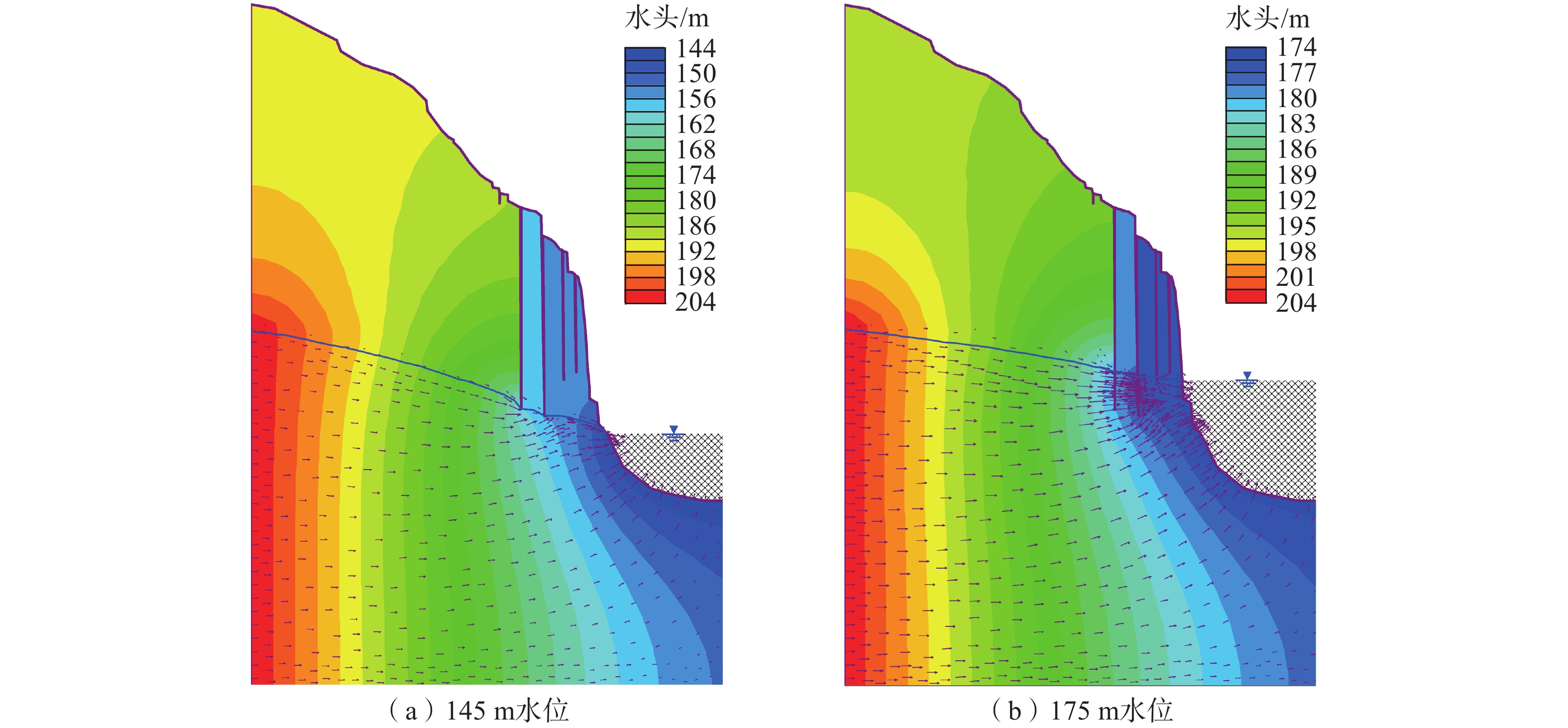

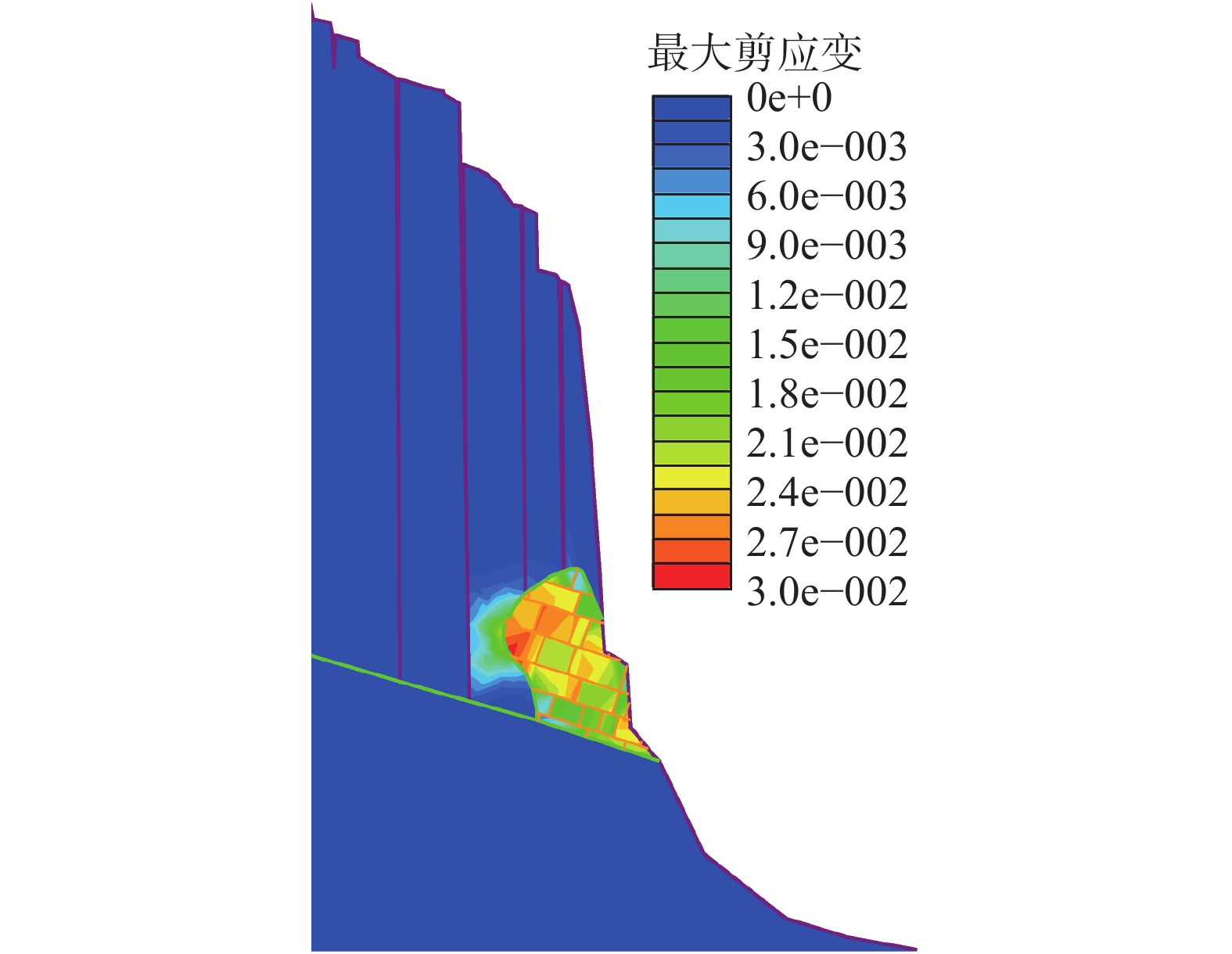
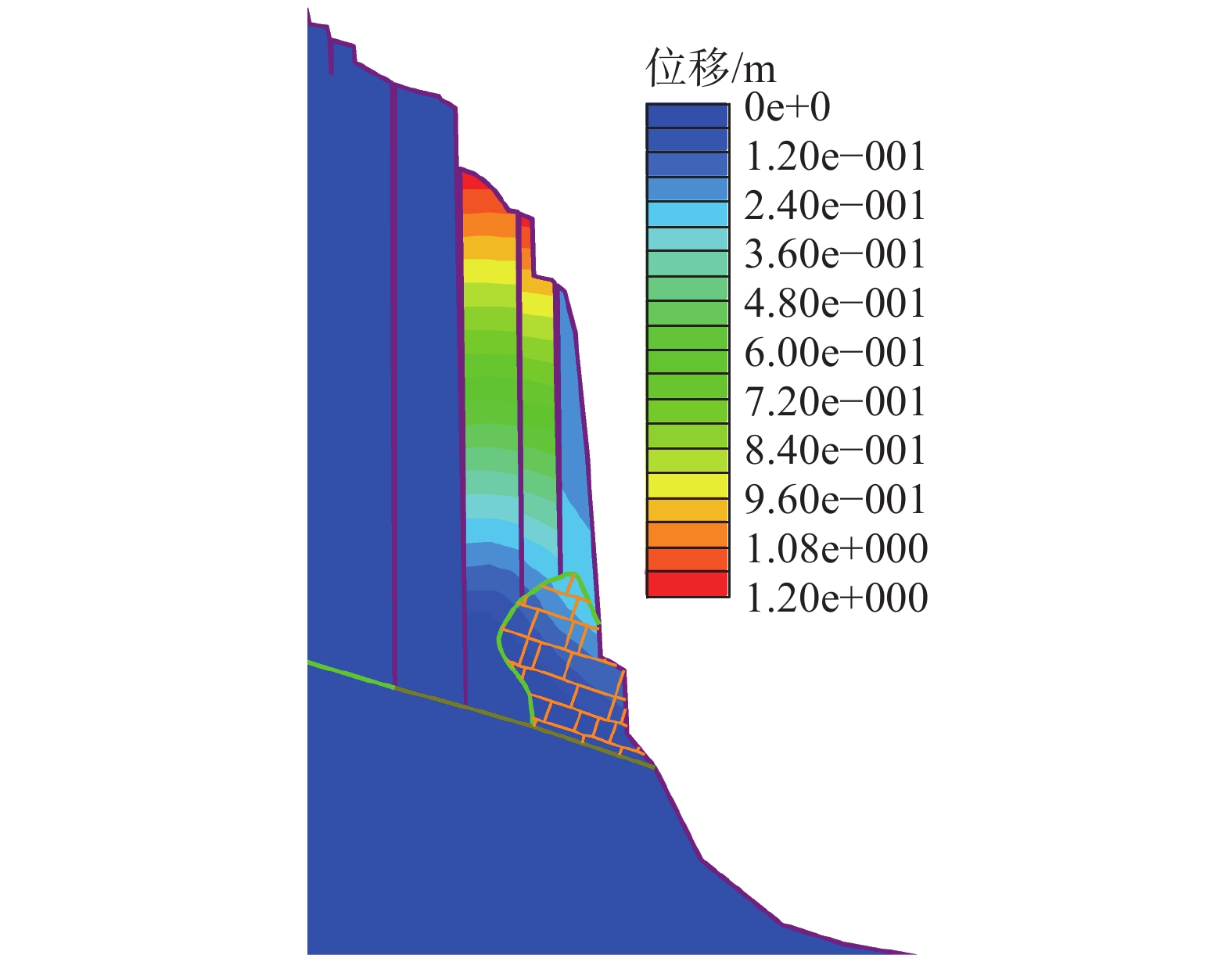
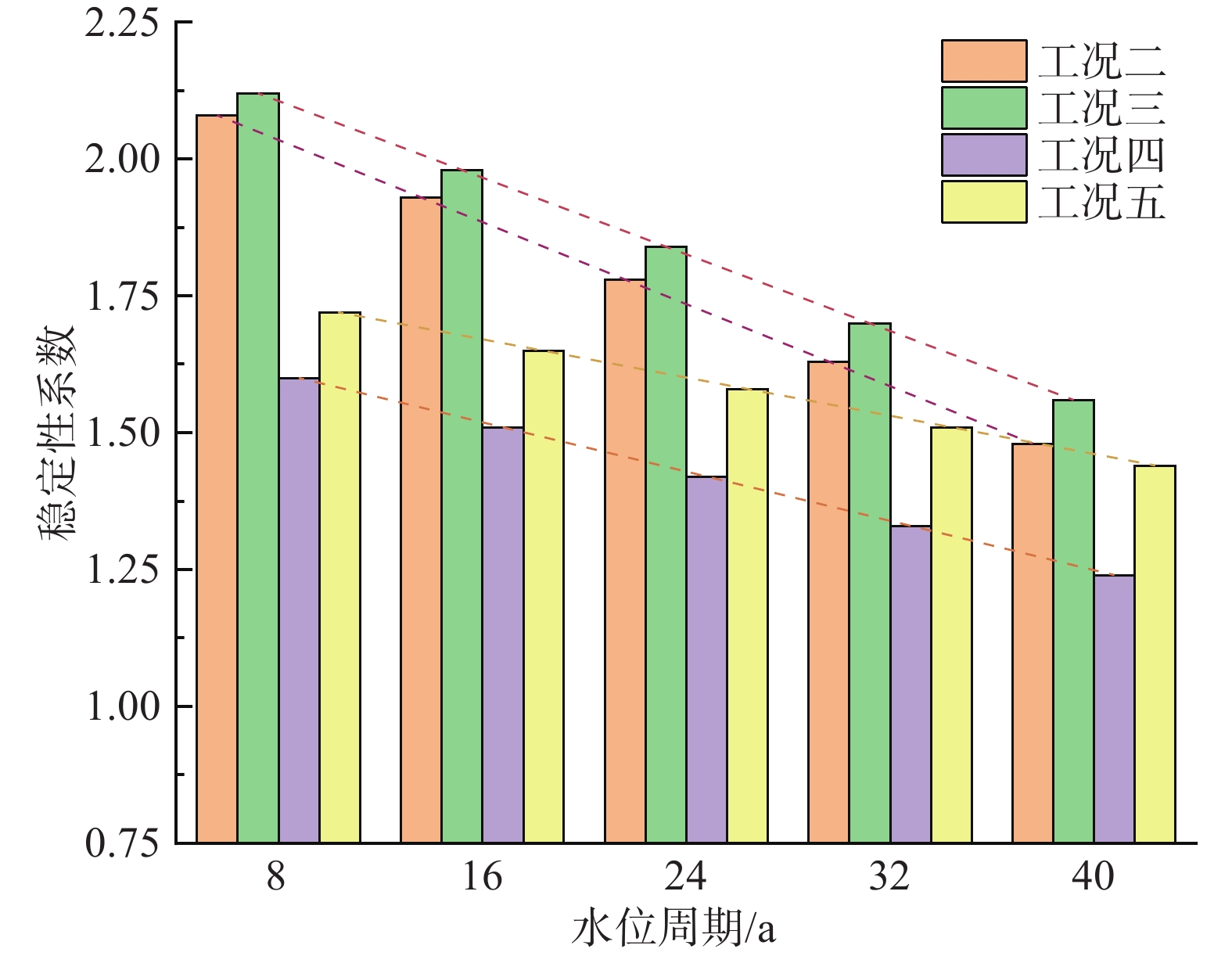
 邮件订阅
邮件订阅 RSS
RSS